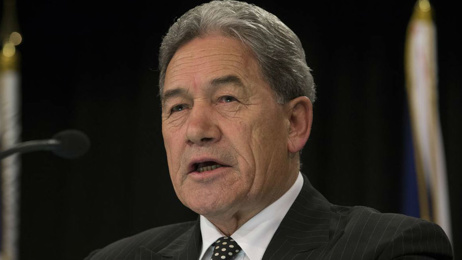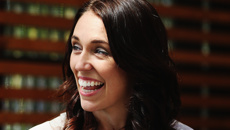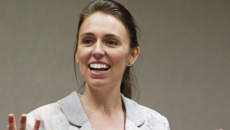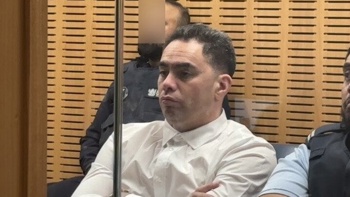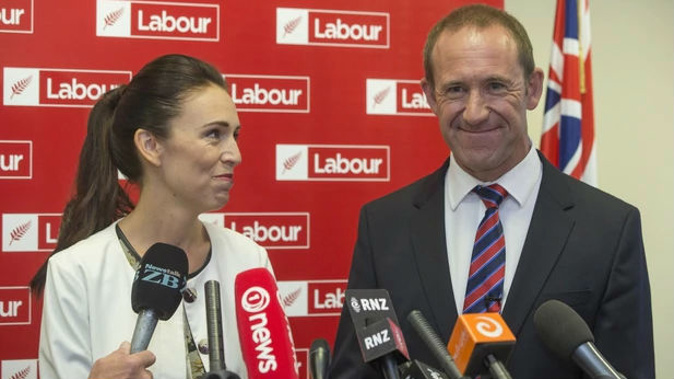
Labour leader Jacinda Ardern's stardust has turned into star power as she heads to the Prime Minister's office at the age of 37 - and just two and a half months after becoming leader of her party.
Ardern defied all the usual rules of politics to get there - she took over the leadership just seven weeks before an election in a desperate bid by Labour to restore its fortunes and it was relying on a support partner which was also in chaos in the Green Party. Even Ardern once commented she had a "hospital pass".
She is New Zealand's third female Prime Minister - after National's Jenny Shipley and Ardern's own mentor, Helen Clark. It is also the first time the party without the highest share of the vote has formed the Government.
Ardern's barnstorming campaign saw her pick up 352,000 more votes for Labour than the party had in 2014, going from 25 per cent in 2014 to 37 per cent this time round - and though she said she had hoped to do better, with the Green Party it was enough to nudge at National's heels.
Ardern was something of a reluctant leader. She had previously said she never wanted the job, having seen first-hand the demands the leadership put on the lives of those who had held it both as a staffer for former Prime Minister Helen Clark, and in her own time as an MP.
She had encouraged Andrew Little to stay on in the role of leader after he went to her to say he did not believe he could deliver a good result for Labour. It took a week for her colleagues to persuade her to agree to take the leadership should Little stand down.
Although those close to her could see her star quality, she kept her light under a bushel for her first two terms as MP. She was first put on Labour's front bench by former Labour leader David Shearer in 2011 as social development spokesperson.
In 2014, she stood on a "ticket" as potential deputy leader for Grant Robertson in his unsuccessful bid for the vacant leadership role following Labour's disastrous 2014 result under then leader David Cunliffe. Little won that contest.
Ardern was beaten by National's Nikki Kaye in the Auckland Central electorate twice but when Shearer left early this year she stood in the byelection in Mt Albert. The seat has a long tradition of being home to Labour leaders - it was Helen Clark's electorate as well as Shearer's, although Shearer never contested an election as leader.
Like former Prime Minister John Key, Ardern's relaxed style made her a master of "soft" media such as women's magazines and breakfast television and radio.
By now Ardern was starting to appear in polls for preferred Prime Minister and soon after the byelection Ardern replaced Labour's veteran Annette King as deputy leader to Little.
Little had hoped Ardern's popularity would push up Labour's vote - but that did not happen. After Little stepped down following a string of dire polls, Ardern stepped up.
She stamped her mark on the leadership early, saying she offered a "relentlessly positive" campaign and would refocus Labour's policy in the environment and education in particular. Labour's policy to offer three years of free post-school education was one of its cornerstone policies and Ardern brought forward the planned introduction of that as well as a promise to increase the student allowance and student loan limits.
Her first policy announcement was a light rail link from the airport to the CBD in Auckland, to be paid for out of a regional fuel levy on Aucklanders. Her second was a levy on commercial users of waters - from bottlers to farmers - to fund regional councils' efforts to clean up waterways.
She declared climate change "the nuclear free movement of my generation" and set a target of having net zero carbon emissions by 2050. Ardern's momentum stalled when National's counter attacks over Labour's tax policies started to bite.
However she succeeded in clawing back Labour supporters from smaller parties such as the Greens and NZ First, which were both hit hard by the campaign. She also targeted young voters and non-voters relentlessly - visiting tertiary institutions all over the country and encouraging them to enrol and vote.
Ardern's upbringing in Morrinsville was one of the constant refrains of her campaign - but it was in Morrinsville that a protest against her proposals was held, including the water levy and the decision to bring agriculture into the Emissions Trading Scheme almost immediately.
Ardern entered Parliament in 2008, aged 28, and was then the youngest MP in Parliament. She had just returned from London, where she had spent time working for British Prime Minister Tony Blair.
Prior to that, a young Ardern had also worked as an adviser for the Labour Government in the offices of Phil Goff and Helen Clark.
She has said her involvement with the Labour Party began when she worked as a teenager on the campaign of former Labour MP Harry Duynhoven in 1999.
She joined Labour aged 17. She grew up in a Mormon household but left the faith in her 20s, mostly because of its anti-homosexual stance.
Take your Radio, Podcasts and Music with you



